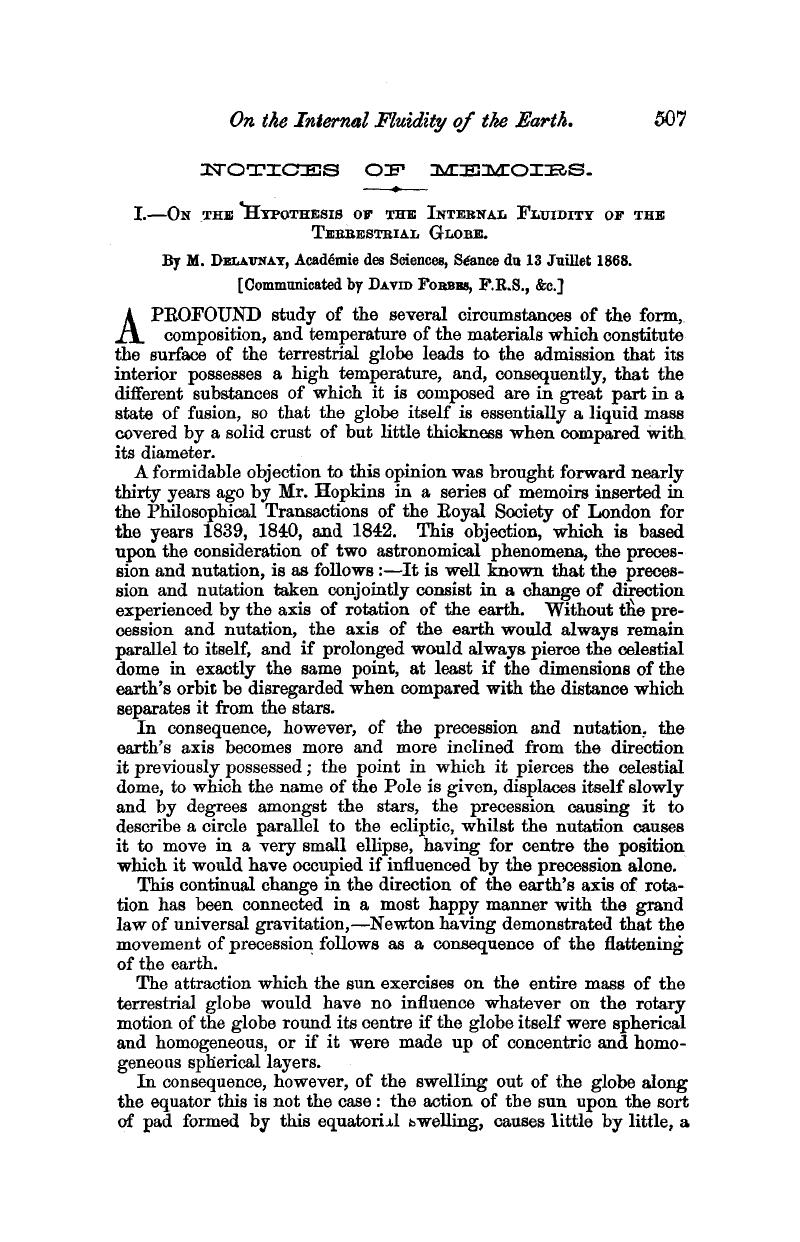Published online by Cambridge University Press: 01 May 2009

page 511 note 1 From the Proceedings of the Boston Society of Natural History, 06 6, 1866.Google Scholar
page 511 note 2 Hopkins, (Wm). Phil. Trans. of the Royal Soc., 1836, p. 382.Google Scholar
page 511 note 3 Thomson, (W). on the Rigidity of the Earth. Proceedings of the Royal Soc., Vol. xii. p. 103.Google Scholar
page 511 note 1 See the Preliminary Observations to the paper of Hopkins above referred to, where these considerations will be found.
page 515 note 1 Thomson, (Wm.) on the Secular Cooling of the Earth. Trans. Roy. Soc. Edinburgh, xxxiii. sec. 1.Google Scholar
page 515 note 2 The effect of these changes in temperature may be estimated from the following table of the expansion of various substances under the influence of heat: For each degree of Fahrenheit, ![]()
A stratum of granite five hundred miles in diameter would contract, on passing from a temperature of 3,000 degrees Fahrenheit to the average temperature of the earth, about seven and a half miles; in the case of a sandstone area of the same diameter, the contraction would amount to about fifteen miles.
The computations on which these estimates are founded were based on experiments made by MrBartlett, H. C., of the United States Engineers, and published in the Amer. Jour. Science, vol. xxii. p. 136. See also for other data on this point Ninth Bridgewater Treatise, C. Babbage, 2nd edit. Appendix, p. 221.Google Scholar
page 516 note 1 See these Proceedings, Vol. x. p. 237.Google Scholar